The Incas and Plants
Whilst visting various archaeological sites around the Andes it comes apparent how important plants, the environment and the seasons were to the ancient cultures of South America, both pre-Inca and within the Inca empire itself; this is evident through the art work, pottery, jewellery and other ornaments created by these cultures.
One of the main activities of the Incas was agriculture. The Incas were dispersed over the Andes and lived in very different geographic locations and the crops they cultivated varied with the different climates and conditions. They are loosely divided into three areas:
Yunka - 'Eyebrows of the Jungle' warm and humid at an altitude of 1800m-3000m, crops included:
Arracacia xanthorrhiza - Peruvian carrot, looks a bit like a carrot crossed with Celery, and is in fact in the same family, APIACE. It is cultivated for its starchy, edible storage root.
Ipomea batata - One of my favouites, Sweet potato!
Manihot esculenta - Yukka (EUPHORBIACEAE), also known as 'Jungle Potato' as it is another tuber crop with a texture not to dissimilar to potato, and in fact if sliced and fried it tastes just like chips!
Carica papya - Papaya
Persea americana - Avocado
Passiflorus ligularis - Passion fruit
Phaleolus lunatus - Butter bean or Lima bean
Phaleolus vulgaris - Common bean
Lupinus mutabilis - Grown for its edible seeds
Arachis hypogaea - Peanut
Queshwa - Dry temperate area with a temperature range of 13-7 degrees celcius. Crops included:
Ullucus tuberosus - Papa lisa, edible tubers.
Tropaolum tuberosum- Tuberous Nasturtium
Cyhomondra splendens - Tomate de arbol
Capsicum annuum - Cayenne pepper
Cyclanthera pedata - Wild cucumber
Capsicum pendulum - Hot pepper
Zea maize - Maize
Puna - high Andean altitudes
Chuna and Moraya (Basically dehydrated potatoes)
Solanum tuberosum - Potato
Chenopodium pallidicaule - Quinoa
One of the other important uses of plants is for textiles. Cotton originated in the South American tropics; the Incas, who generally lived at higher altitudes, tended to use fibres from Alpacas and Llamas and plants were used as sources of dyes. Species used for dyes include...
Usnea barbata - a Lichen
Bidens andicola
Buddlejia coracea
Indigofera tinctora
Juglans neotropical - Peruvian Walnut
Baccharis polyantha
Bixa orellana
Schinus molle - Peruvian pepper tree
The Inca Eden Project?
Not far from the original Inca capital, Cusco, lies Moray. This is an impressive site that is made up of a deep ampitheatre of circular terraces, as the photo below shows (note the people at the bottom for scale).
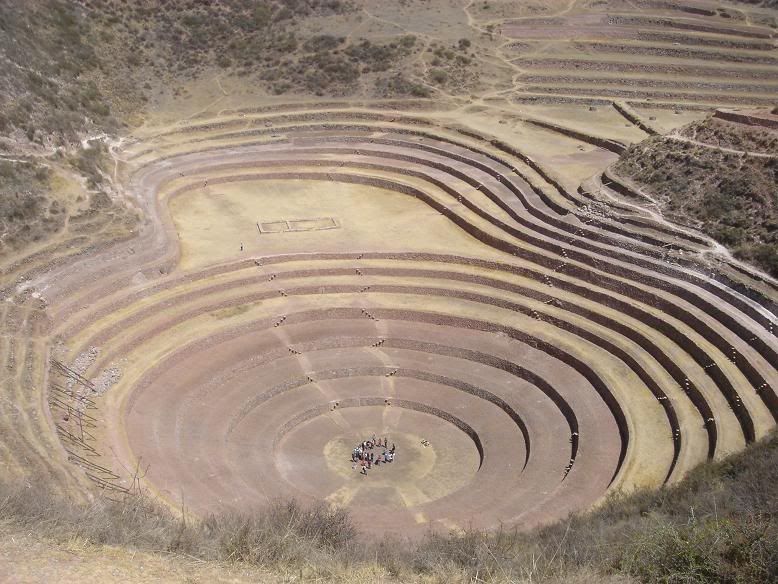
There are many theories for the role of Moray, but it is widely considered to be a sort of giant plant laboratory, where the Incas grew over 60% of vegetable species including over 3000 varieties of potatoes, maize and many other species. The sheltered position of the site means that each of these cultivation terraces represents about 1000m of altitude in normal conditions of farming. The complex, which is 150m from top to bottom, represents 20 or more micro climates. The Incas used the site to select varities which would be suitable for different climatic conditions in different parts of the Inca empire. So maybe Mendel didn't discover F1 hybrids afterall...
Incas and Garden Design
The incas were obviously impressive engineers, designing huge forts, villages, temples and agricultural systems, using giant blocks, some weighing over 300 tonnes (defying modern day lifting technology! And this was all created by a culture that had not invented the wheel!). Some of the most beautiful parts of the Incan sites were the irrigation systems and water features:
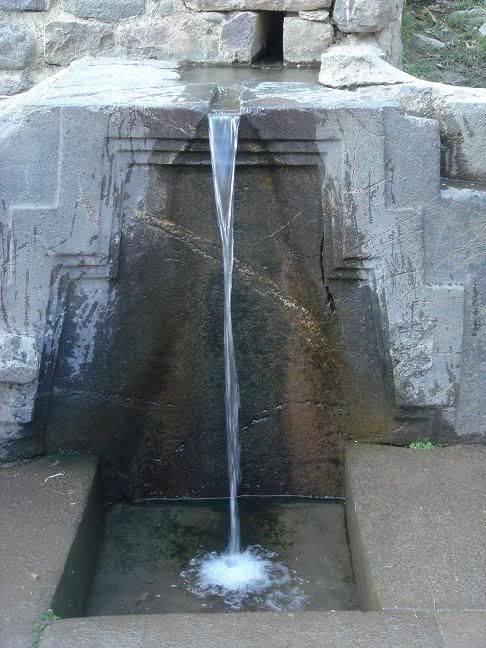
Water fountain at Ollaytantambo
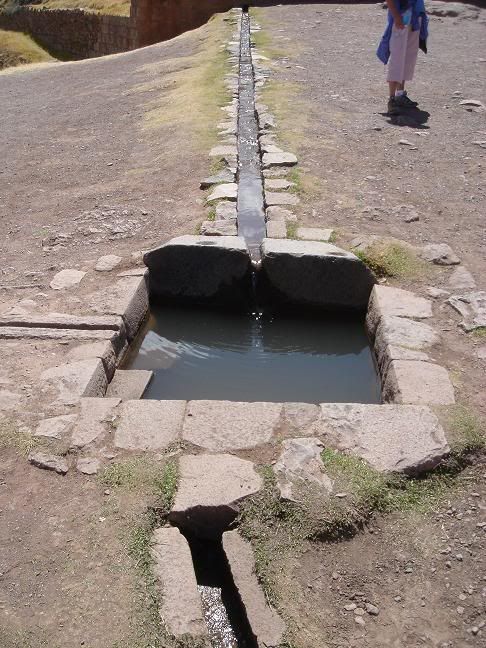
Irrigation rills at Pisac
And of Course, Macchu Picchu
I could not write about the Incas without mentioning Macchu Picchu, which really does live up to and deserve all the hype! The thing that is most spectacular about the site is it's location, set on top of a mountain in the middle of cloud forest (one of my favourite ecosystems!) Cloud forest is one of the most biodiverse ecosystems; for example the sanctuary of Macchu Picchu makes up just 0.07% of Peru's territory, but it contains 17% of Peru's species of POACEAE and ORCHIDACEAE, 15% of SCROPHULARIACEAE and 10% of ASTERACEAE. At the bottom of the valley where the steep climb up to Macchu Picchu begins on an old Inca path is a small Botanic Garden, an absolute gem, which is not widely advertised (I only came across it by chance) - definitely worth a visit if you're in the vicinity! Plants to be found within the Macchu picchu santuary:
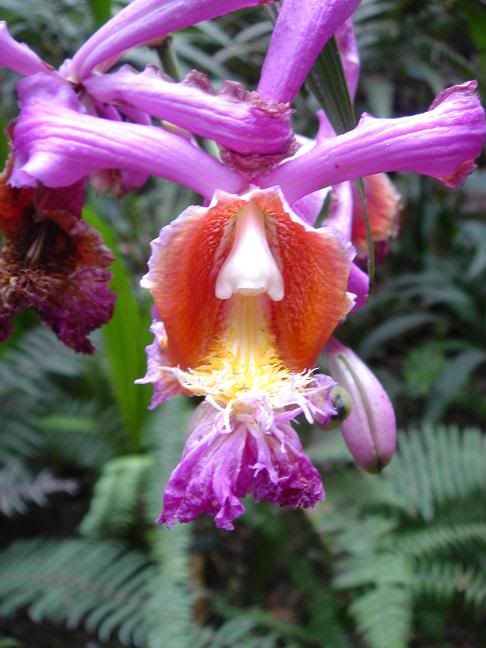
Sobralia virginalis ORCHIDACEAE
There are 1,625 orchid species in Peru, and in the reserve at Macchu Picchu there are at least 420 different species (infact, the figure is thought to near 600. The great beauty of the orchid has threatened many species as they are taken from the wild, the most at risk genuses are considered to be, Anguloa, Bletis, Lycaste, Masdavillia, Phrgmipedium, Sobralia, Stanhopea and Telipogon.
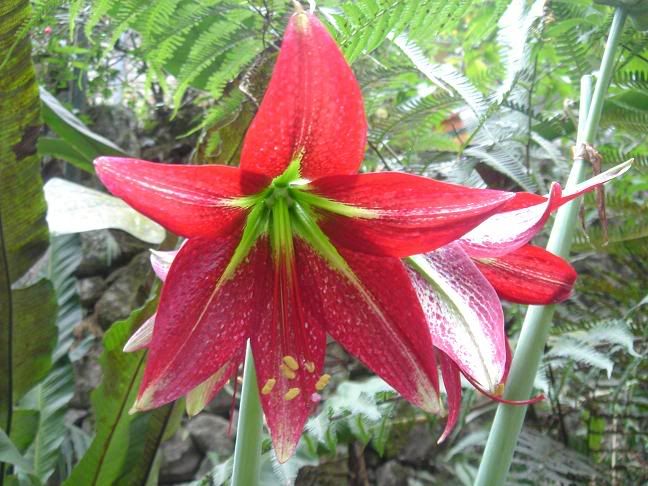
Hippeastrum machupijchense AMARILIDACEAE
![]()
Heliconia affinis MUSACEAE
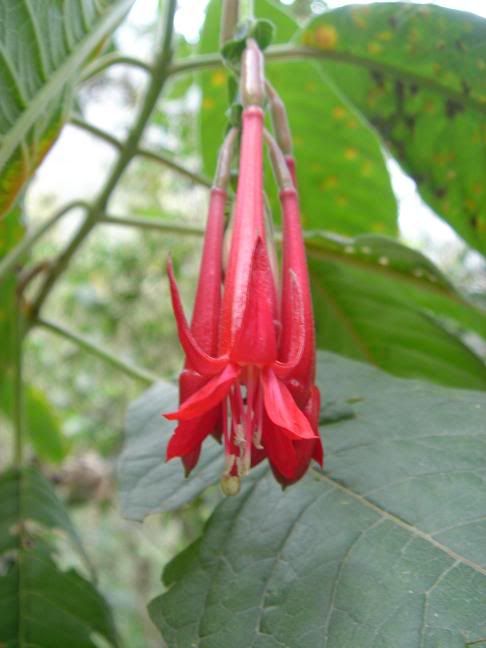
Fuchsia boliviana ONAGRACEAE
References and sources:
www.cuco-peru.org/cusco-surrounding-cusco.circuitos-moray.shtml
Textiles museum, Cusco.
Museo de Inca, Cusco.
Macchu Picchu museum and botanical garden, not the correct name but have managed to lose my guide book, so can't look it up - sorry!

0 Comments:
Post a Comment
<< Home